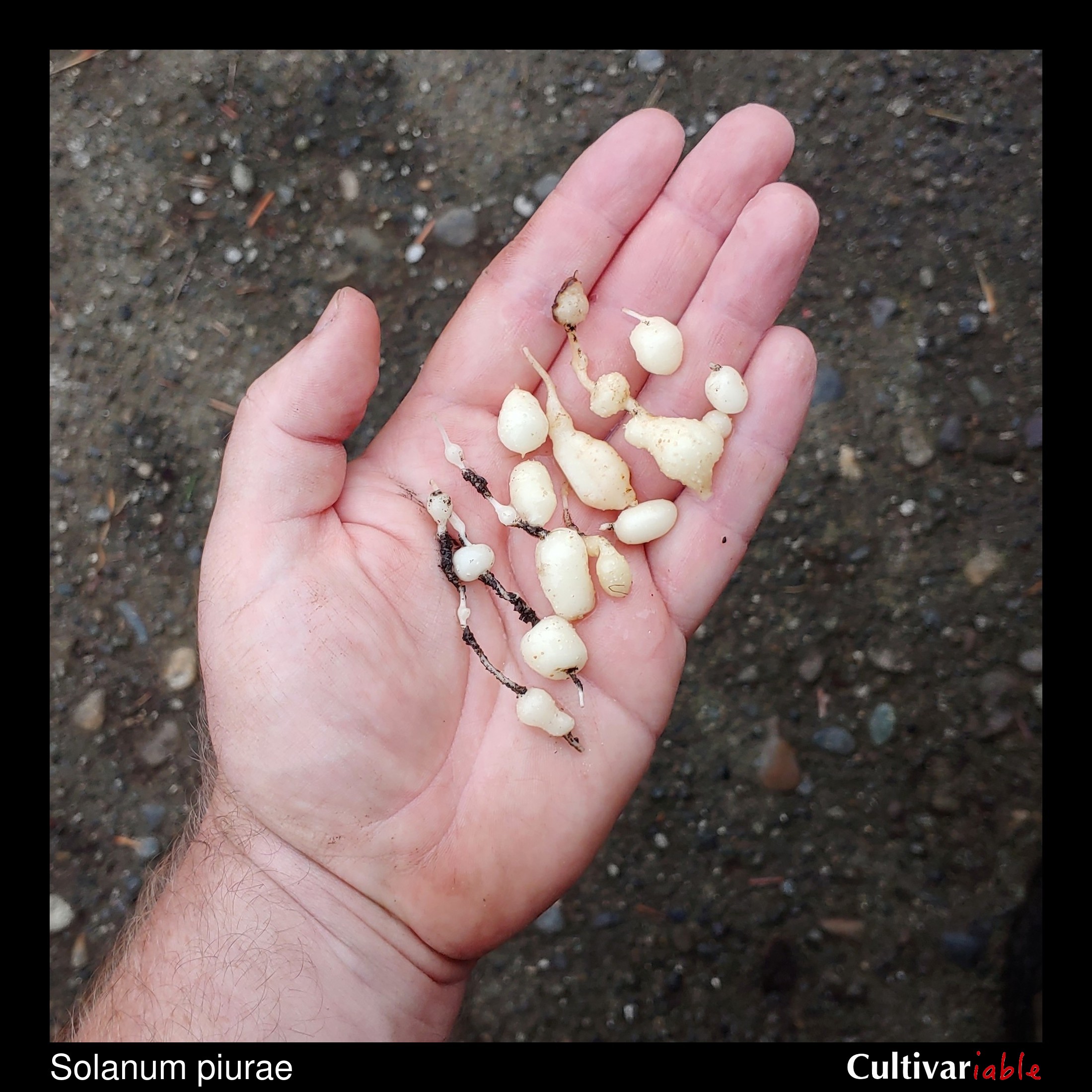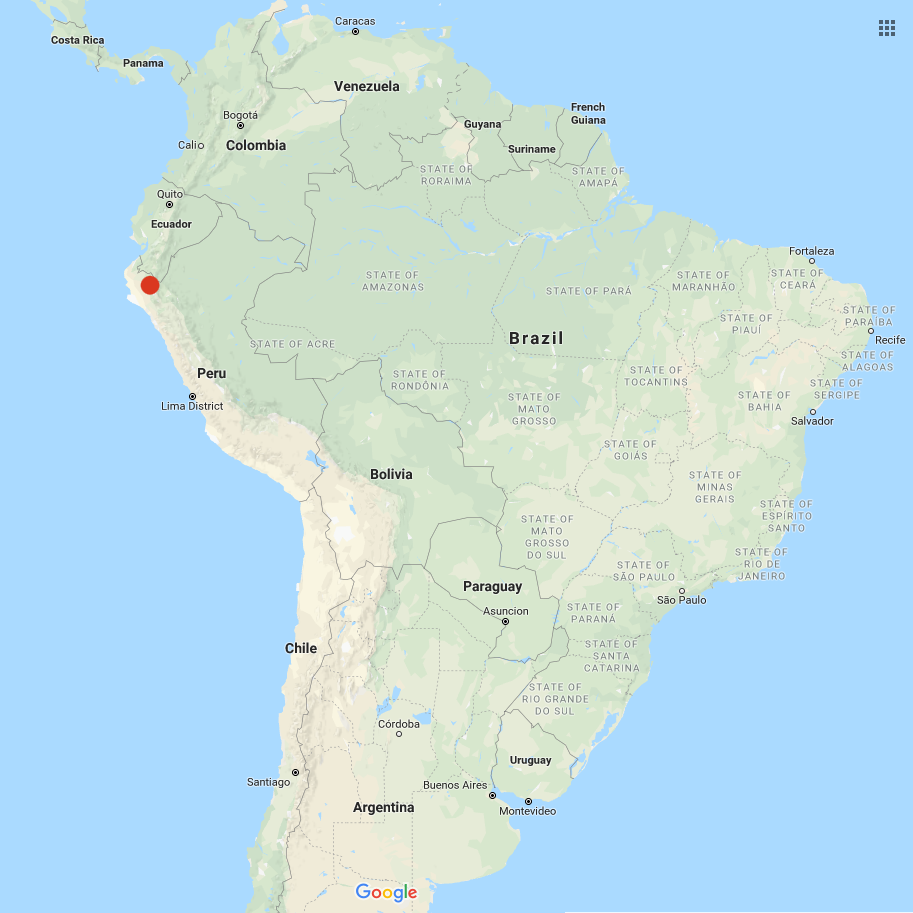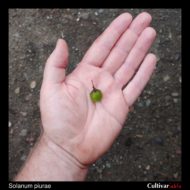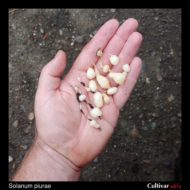Solanum piurae

| Common Names | |
| Code | pur |
| Synonyms | |
| Clade | 3 |
| Series | Piurana |
| Ploidy | Diploid (2x) |
| EBN | 2 |
| Tuberization Photoperiod | Unknown |
| Self-compatibility | No |
| Nuclear Genome | P |
| Cytoplasmic Genome | Unknown |
| Citation | Bitter: Bot. Jahrb. Syst. 54, Beibl. 119: 5. 1916. |
Description

Solanum piurae is a species of limited distribution in northern Peru. Plants reach about two and a half feet tall. Flowers white. Berries small and round. Tubers small, white, and mostly moniliform. Native habitat is rocky slopes from 8,200 to 10,800 feet (2500 to 3300 m) (Correll 1962).
The specific epithet, piurae, refers to Piura, Peru. While there is no completely standardized pronunciation for scientific names, the most common way to pronounce this species is probably so-LAY-num pee-OO-ree.
Jarvis (2008) predicts that this species will lose 96% of its present range by 2055 due to climate change, most likely entailing a critical loss of genetic diversity.
Resistances
| Condition | Type | Level of Resistance | Source |
|---|---|---|---|
| Leptinotarsa decemlineata (Colorado Potato Beetle) | Invertebrate | Somewhat resistant | Pelletier 2007 |
| Phytophthora infestans (Late Blight) | Fungus | Resistant | Gonzales 2002 |
| Phytophthora infestans (Late Blight) | Fungus | Some resistance | Karki 2020 |
Glykoalkaloid content
Images
 |
 |
||
Cultivation
I have had a hard time getting tubers from this species. It appears to begin tuberizing much later than even most short day species.
Breeding
Crosses with S. tuberosum
Watanabe (1991) found that 3.5% (which was one one plant) of varieties of this species produced 2n pollen, which would be effectively tetraploid and 4EBN.
| Female | Male | Berry Set |
Seed Set | Ploidy | Germ | Source |
|---|---|---|---|---|---|---|
| S. tuberosum 2x + Sli | S. piurae | Yes | Moderate | Ordoñez 2014 |
Crosses with other species
| Female | Male | Berry Set |
Seed Set | Ploidy | Germ | Source |
|---|---|---|---|---|---|---|
